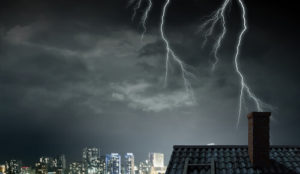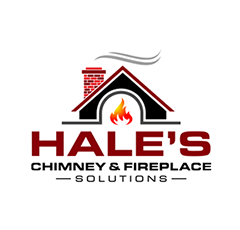Your chimney was constructed to withstand some pretty harsh conditions ranging from wind, high heat, freezing temperatures, and falling debris. However, even the most well-built chimney can quickly start to fall to pieces if it isn’t properly maintained. This is especially true when it comes to the effects that water can have on your chimney and specifically your chimney masonry. We here at Hale’s Chimney & Fireplace Solutions know what can happen to a chimney that hasn’t been properly protected from water entry, and the effects can be devastating. That’s why we want to help you understand some of the masonry issues that can be caused by water entry and what you can do to protect your chimney.
The Effects of Water In Your Chimney
Moisture can be incredibly hard on your chimney’s health. If moisture caused by rain, sleet or snow is allowed to settle on your chimney, it can seep into tiny pores in the brickwork and settle into little pools of moisture inside of the brick and mortar. During the spring, summer, and fall, these pools can slowly start to dissolve your masonry from the inside out. However, these pools can be most devastating in the winter when it gets cold. This is because these pools can freeze, expand and create tiny cracks inside of your masonry. If water entry is allowed to continue it usually doesn’t take long for you to start to see issues with your masonry such as cracking in your brickwork, crumbling mortar, and bricks popping out.
Another issue occurs when water is allowed to enter through the top of your chimney. When this happens, water can mix with creosote and soot inside of your chimney creating an oily substance that can run down to your fireplace. This mixture can stain and is difficult to clean up. In addition to that, it can create an unpleasant odor that can drift into your living areas.
We Can Help Protect Your Chimney!
The good news is that your chimney was designed with a couple of devices that can help protect your masonry from water entry. A chimney crown sets on the very top of your chimney. It was constructed out of cement or mortar when your chimney was constructed. Its purpose is to deflect and stop water from pooling on top of your chimney brickwork. Another protective device is your chimney cap. A chimney cap is a cover that sits over your chimney opening, preventing rain, sleet, or snow from falling inside of your chimney. If either one of these devices isn’t functioning properly, your chimney is in danger of being exposed to water.
The good news is that we here at Hale’s Chimney & Fireplace Solutions can help you protect your chimney from water entry. If you think that there might be a water-related issue with your chimney, the first step is to have one of our Chimney Safety Institute of America (CSIA) certified chimney sweeps inspect your chimney to pinpoint what is causing the issue. Once one of our chimney sweeps discovers what is going wrong, they will be able to remedy the issue. Whether your issue is related to your chimney crown, chimney cap, or some other reason, the chimney sweeps at Hale’s Chimney and Fireplace Solutions can fix it.
